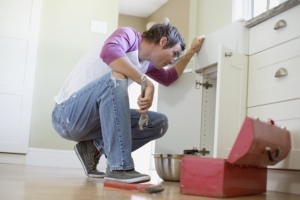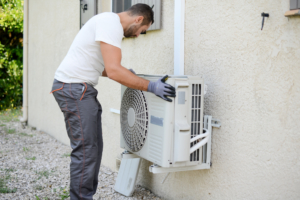When it comes to building, there’s no single right answer as to which type of insulation is the best choice for your project. Every building presents unique challenges and requirements that need to be considered. One popular option gaining traction in recent years is spray foam insulation, which offers several advantages over traditional insulation materials like fiberglass or mineral wool. In this article, we will take a look at the pros and cons of both traditional and spray foam equipment-based insulation so you can make an educated decision about which one is ideal for your project. We will explore how each option can impact energy efficiency, comfort levels within interior spaces, sound mitigation capabilities, fire ratings and installation costs – just to name a few! By arming yourself with knowledge about each option beforehand – selecting the right product becomes much more straightforward. So let’s get started!
Comparing Spray Foam Insulation and Traditional Insulation
In recent years, the construction industry has seen a shift towards more environmentally friendly and energy-efficient methods, with insulation playing a key role in this transformation. Spray foam insulation, a novel alternative to traditional fiberglass or cellulose insulation, has been gaining prominence for its unique properties and benefits. For starters, the foam expands upon application, allowing it to fill gaps and crevices, resulting in a more thorough and efficient insulation. Consequently, this contributes to significant energy savings, improved indoor air quality and reduced allergens. Though traditional insulation methods have their merits, it can be argued that the seamless and expansive nature of spray foam insulation truly sets it apart. By embracing innovative solutions like spray foam, homeowners and building professionals can work together to build a greener, more sustainable future.
Pros and Cons of Spray Foam Equipment
Spray foam equipment has revolutionized the insulation industry, providing impressive energy savings and enhanced structural stability for both residential and commercial properties. However, like any technology, it has its pros and cons. One major advantage is its ability to create an airtight seal, substantially reducing energy losses and saving homeowners and businesses significantly on their heating and cooling costs. Additionally, the quick and easy installation process provided by spray foam equipment lends itself to improved efficiency and cost-effectiveness for insulation professionals. On the other hand, the initial investment required for high-quality spray foam equipment can be steep, particularly for small businesses or individual property owners considering it as a DIY project. Furthermore, improper installation or low-quality materials can lead to inconsistent coverage and diminished effectiveness. As a result, potential users must weigh the long-term benefits against the initial costs and ensure proper training and education prior to implementation.
Considerations for Optimal Temperature in Your Home
Achieving the optimal temperature in your home is vital for several reasons, including comfort, energy efficiency, and maintaining a healthy living environment. Therefore, careful planning and evaluation of various factors are essential for successful temperature management. Primarily, one must evaluate insulation levels, draft-proofing measures, and understanding the thermal mass of their dwelling. Furthermore, strategically using available heat gains, such as natural sunlight through windows, can contribute to a better indoor climate. The ideal personalized temperature setting may vary based on individual preferences; however, the general consensus is that 70°F (21°C) promotes maximum comfort and productivity. Employing programmable thermostats or smart home technology can assist in reaching the ultimate balance of efficient energy consumption, economic savings, and enhanced living experience.
The Benefits of Using Spray Foam Insulation
Spray foam insulation machines has increasingly become the preferred choice for homeowners and construction experts due to its numerous benefits. This innovative solution provides superior thermal performance by sealing gaps and reducing air leakages, which in turn, results in significant energy savings on heating and cooling costs. Additionally, spray foam strengthens building structures by filling and adhering to cavities in the walls, floors, and ceilings. Its exceptional moisture resistance reduces the risks of mold and mildew growth, contributing to a healthier living environment. Furthermore, spray foam insulation acts as an excellent sound barrier, providing peace and quiet within your indoor spaces. By choosing this advanced insulation method, you are not only investing in a cost-effective solution, but also promoting sustainability and improved indoor air quality.
What To Look For When Choosing a Spray Foam Insulation Installer
When selecting a spray foam insulation installer, it is essential to ensure that you are partnering with a reputable and professional company. Begin by researching the installer’s experience, certifications, and customer reviews to gauge their technical expertise and their commitment to customer satisfaction. Inquire about the specific spray foam products they use, as the quality of these materials directly impacts the insulation’s long-term performance. Additionally, ascertain whether the installer is knowledgeable about local building codes and understands the importance of proper ventilation installation to promote a healthy indoor environment. Moreover, request for a detailed written proposal comprising of the project timeline, scope, cost, and guarantees to secure a transparent and quality-driven partnership. By employing these strategies, you can confidently engage a spray foam insulation installer who values precision and the well-being of your property.
How to Maintain Your Spray Foam Insulation for Maximum Efficiency
Proper maintenance of your spray foam insulation is crucial for ensuring maximum efficiency and prolonging its lifespan. The first step in maintaining this insulation is conducting regular inspections, particularly in areas prone to moisture, such as basements or attics. Detecting any signs of water infiltration early on is essential in preventing mold growth and structural damage. Additionally, it is important to ensure adequate ventilation within the insulated space, as this supports moisture control and contributes significantly to an efficient insulation system. In cases where the insulation has been compromised or damaged, prompt repairs must be conducted by a professional installer to avoid further damage and inefficiency. Furthermore, the importance of following the manufacturer’s recommendations for maintaining your specific type of spray foam insulation cannot be overstated, as this information will vary depending on the product. Overall, proper care and attention will guarantee the optimum performance of your spray foam insulation, providing you with the desired energy savings and comfort in your home or business.
In conclusion, spray foam insulation offers significant benefits over traditional insulation and you should be aware of the considerations when you are installing it in your home. While some installation costs are involved when purchasing the spray foam equipment, it is made more economical in the long-run by its high resistance to moisture and temperature changes. The wide range of temperatures that can be allowed before any damage occurs provides added convenience when using spray foam systems because fewer repairs will be necessary. Additionally, it is important to choose a knowledgeable spray foam installer for optimal installation and results. Lastly, by properly maintaining your spray foam insulation system with appropriate inspections and replacements or adjustments as needed, you can ensure efficiency for years to come.




